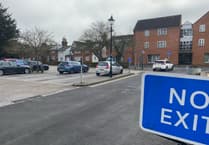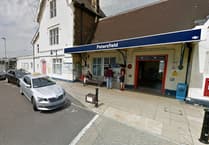It’s an idyllic scene. A rambling rustic building set beside a shimmering stream from where an attractive young woman is fetching a pail of water. Ducks waddle nearby and a sheepdog raises his head as if just awoken from a nap.
This romanticised view of the countryside is typical of the work by artist Harry Sutton Palmer who painted this, entitled Dairy Farm, Farnham, in 1906.
But few looking at this picture would suspect the name of this sunlit location – Snailslynch – was linked to a notorious child murder a mere 18 years before the painter took up his brush to recreate it.
On March 7, 1898, the body of a two-year-old girl was found in a sewerage ditch at Snailslynch. She was covered in water and mud as if she had been pressed down into the ditch.
The discovery was made by a cowman, Thomas Ralph, who on the previous evening had seen a woman stooping down with her hands and feet in the water.
He asked the woman what she was doing, and she said she was washing her hands. When he returned to the spot, his suspicions were aroused after he found the baby’s feeding bottle in the water.
A doctor who carried out a post-mortem examination on the body decided the child had died from suffocation by drowning, but that she may have been stunned by a blow to the head beforehand.
The toddler was presumed to be Edith Mary Trigg, the daughter of a 20-year-old unmarried mother Alice Trigg who was charged with her wilful murder.
Alice lived at Whitmore Bottom with her grandfather Alfred Harding who, Guildford Assizes court was told, had taken her in when she was “betrayed” by the father of the child.
Mr Harding told the court that on Sunday, March 5, his grand-daughter had been home with him and her little one. At about 2pm he went out and when he returned two hours later he found they were not there.
When Alice came back, she did not have Edith with her and when asked where the child was, replied she was with her grandmother – despite her not having one.
By the following Friday, Mr Harding was feeling so uneasy about the whereabouts of his great-granddaughter that he could not go to work. Alice reassured him the child would be back the next day but the following afternoon she left the house and never returned, prompting him to go to the police.
An inquest had earlier been told, by Lizzie Dollery of the Hop Bag Inn, Farnham, that Alice had gone to her home with the baby on March 5, and had requested to leave her “perambulator” there. She then left with the child and the pram remained there until collected by the police.
The evidence seemed heavily stacked against Alice, but the defence convinced the jury the case was full of doubt and mystery.
Alice had been accepted, even by crown witnesses, to have been an exemplary mother and her lawyer said there was no proof the woman seen at the ditch was Alice, nor that the child found drowned there was hers.
The jury returned a verdict of not guilty and Alice was discharged. What became of her is unknown, but Snailslynch farmhouse still exists, having been awarded grade II listed status in 1972.




